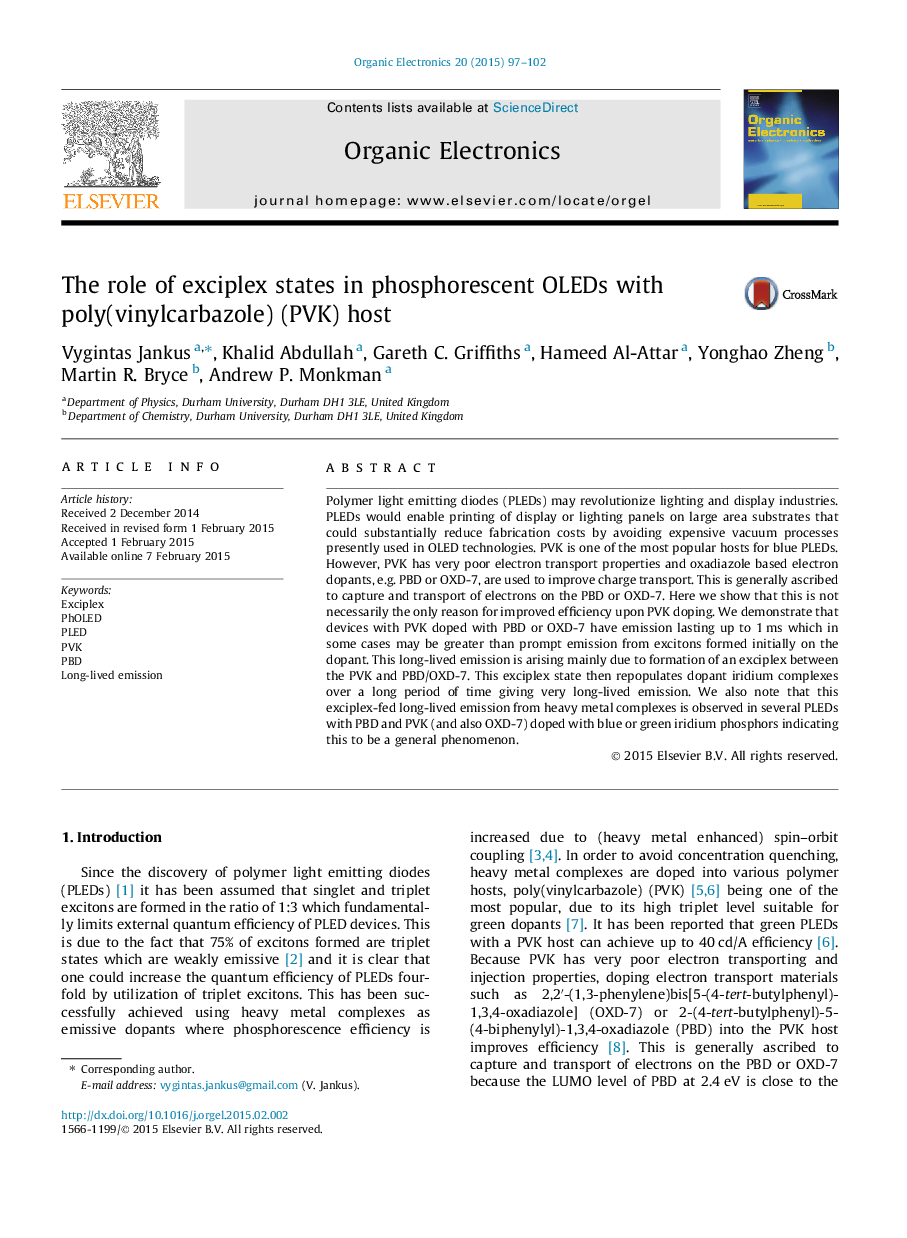| Article ID | Journal | Published Year | Pages | File Type |
|---|---|---|---|---|
| 1263734 | Organic Electronics | 2015 | 6 Pages |
•Oxadiazole dopants in PLEDs with PVK usually improve PLED performance.•Here we show that this improvement is not only due to improved charge transport.•Emission lasting up to 1 ms also improves efficiency substantially.•This emission is due to an exciplex formed between the PVK and oxadiazole dopants.•It is established that this is a general phenomenon.
Polymer light emitting diodes (PLEDs) may revolutionize lighting and display industries. PLEDs would enable printing of display or lighting panels on large area substrates that could substantially reduce fabrication costs by avoiding expensive vacuum processes presently used in OLED technologies. PVK is one of the most popular hosts for blue PLEDs. However, PVK has very poor electron transport properties and oxadiazole based electron dopants, e.g. PBD or OXD-7, are used to improve charge transport. This is generally ascribed to capture and transport of electrons on the PBD or OXD-7. Here we show that this is not necessarily the only reason for improved efficiency upon PVK doping. We demonstrate that devices with PVK doped with PBD or OXD-7 have emission lasting up to 1 ms which in some cases may be greater than prompt emission from excitons formed initially on the dopant. This long-lived emission is arising mainly due to formation of an exciplex between the PVK and PBD/OXD-7. This exciplex state then repopulates dopant iridium complexes over a long period of time giving very long-lived emission. We also note that this exciplex-fed long-lived emission from heavy metal complexes is observed in several PLEDs with PBD and PVK (and also OXD-7) doped with blue or green iridium phosphors indicating this to be a general phenomenon.
Graphical abstractFigure optionsDownload full-size imageDownload as PowerPoint slide
